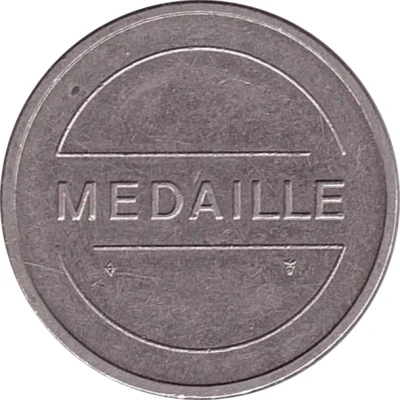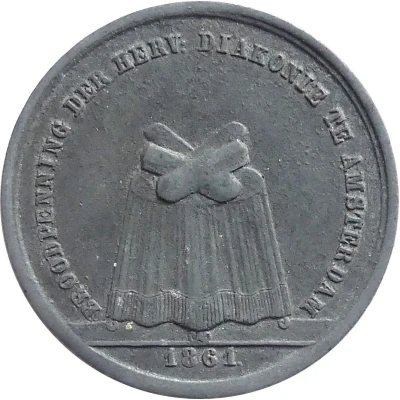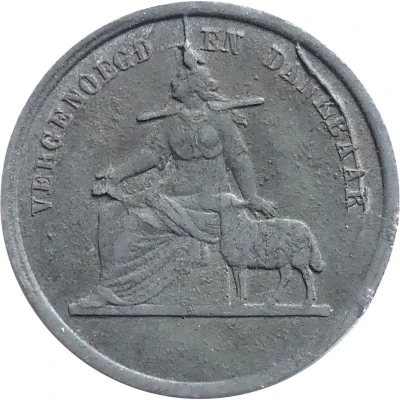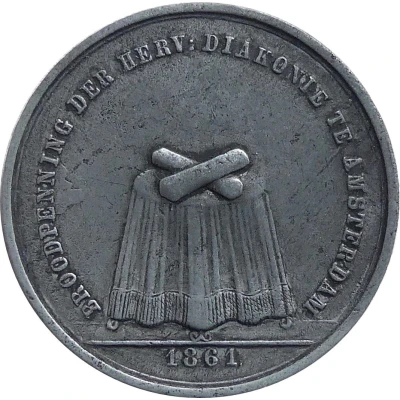
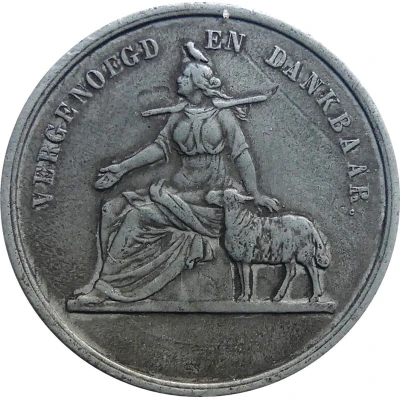

Bread Token with two loaves Diaconie d'Amsterdam
1861 year| Zinc (Variations in silver exist) | 6.2 g | 28 mm |
| Location | Netherlands |
|---|---|
| Type | Spiritual tokens › Religious tokens |
| Year | 1861 |
| Composition | Zinc (Variations in silver exist) |
| Weight | 6.2 g |
| Diameter | 28 mm |
| Thickness | 2 mm |
| Shape | Round (Sometimes with a hole in the middle) |
| Technique | Milled |
| Orientation | Medal alignment ↑↑ |
| Updated | 2024-11-14 |
| Numista | N#225208 |
|---|---|
| Rarity index | 83% |
Reverse
Woman with reaching hand in the company of a sheep
Script: Latin
Lettering: VERGENOEGD EN DANKBAAR
Translation: Pleased and Grateful
Edge
Plain
Comment
Similar tokens present three or four loaves.
The yoke is a slightly curved wooden rod that, placed on the shoulders, is used to carry two burdens or two buckets, attached to each end. The term “diaconia” designates the various social commitments of Christian communities, it is the implementation of the Gospel of Jesus Christ in the service of the person, especially the poorest, but it is much broader than charity, it touches and founds all Christian life. The use of this term provides an opportunity to revisit the theological foundations of solidarity action and to show its spiritual dimension.
https://eglise.catholique.fr/glossaire/diaconie/
A bread token is a token issued by a charity to the less fortunate that was exchangeable for food. These tokens were used since the end of the Middle Ages, but mainly in the nineteenth and the first half of the twentieth century. Initially they were published by charitable religious institutions. Bread tokens were issued in many European countries, but especially in industrialized areas in Belgium, France and the United Kingdom. This was due to the great poverty among factory workers at the time and the socialism that was emerging at the time. Bread tokens have fallen out of use due to improved legislation in the field of social security.

